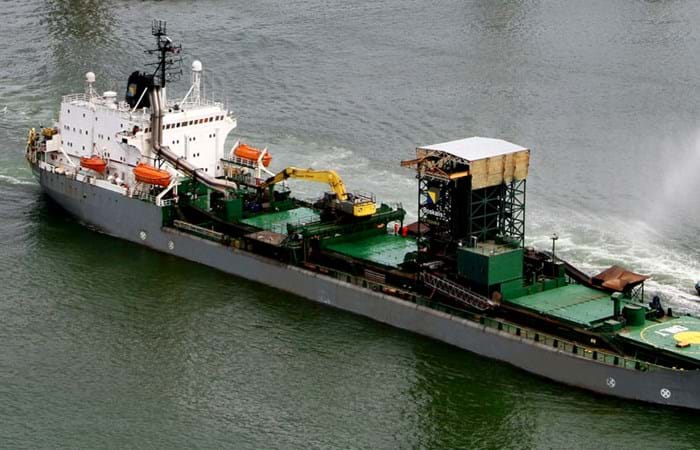In 2008 Boskalis was approached by Petrobras to carry out a rock installation project at the oceanic terminal, one of Petrobras’ offshore oil production locations. The terminal, situated at Campos Basin offshore Rio de Janeiro, Brazil, is a maritime complex consisting of one Independent Re-pump Platform (PRA-1), two monobuoys and a FSO vessel which links to a 20 inch gas pipeline system.
The pipeline network total extension of 25 km consists of three Pipeline End Manifolds (PLEM) installed on the seabed at a depth of approximately 100 m. The terminal, constructed to comply with the Oil Outflow and Handling Master Plan of Campos Basin – PDET, was the solution for the oil outflow produced at platforms P51, P53, P55 and Roncador module. Petrobras pro-actively initiated this project to ensure the future integrity and safety of the oil production facilities. Petrobras considered specialized accurate rock installation techniques to protect, stabilize and isolate the pipelines and subsea structures and in doing so to protect the environment. For Petrobras, Boskalis and partners it was the first time an IBAMA (Environmental) licensed rock installation project was carried out in Brazil. IBAMA issued this license after a detailed analysis of amongst others the impact on the environment and the proposed measures to mitigate turbidity during the installation process. Also the IBAMA guidelines with regard to the selection of the quarry mining, production of the rock, logistics and actual loading of the vessel, were fully met.
Quality and safety performance
The safety performance on the project was excellent. Before mobilization several safety and quality pre-inspections were carried out by independent auditors and Petrobras representatives; all findings and observations were resolved before arrival in Brazil to guarantee a smooth importation process. During the project preparation phase the Boskalis NINA (No Injuries No Accidents) program was implemented; all truck drivers and other personnel were successfully trained and explained the values and rules of the safety program. Special attention was paid to safe driving, the Boskalis Offshore theme for the year 2011. Thanks to the thorough preparations almost 400,000 accident-free km were driven on the project.
